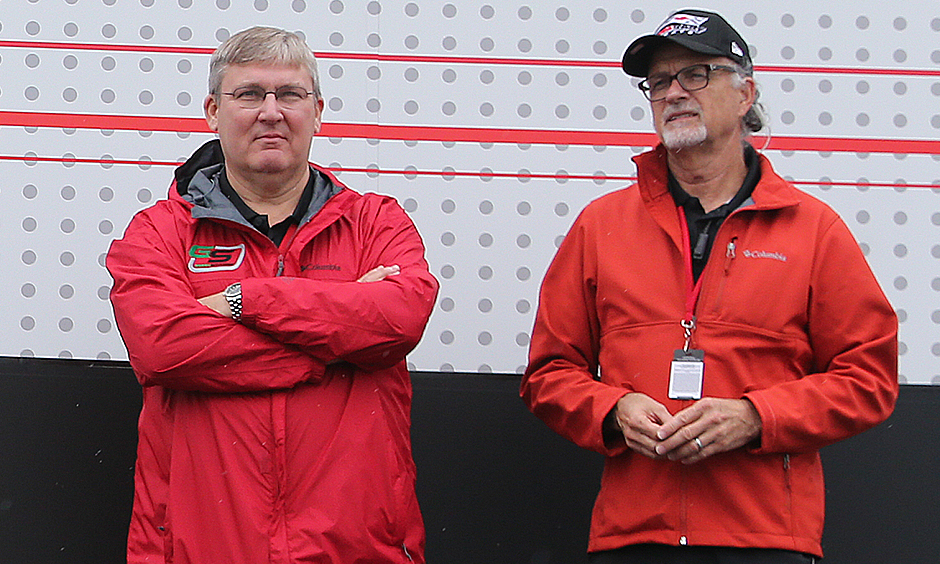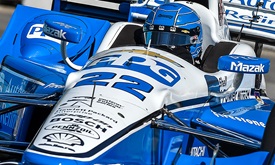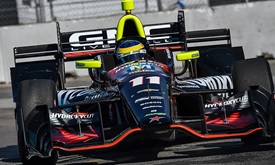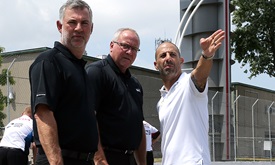Tasks vary widely for promoter of Toronto, Mid-Ohio races
JUL 16, 2016
TORONTO – They may both have “Honda Indy” in their names, but the back-to-back Verizon IndyCar Series races to end the month of July couldn't be more different in look and logistics.
This weekend’s Honda Indy Toronto happens on a tight, temporary street course at Exhibition Place while the The Honda Indy 200 at Mid-Ohio goes two weeks later at the flowing, permanent Mid-Ohio Sports Car Course in Lexington, Ohio.
Both Verizon IndyCar Series events take intricate preparation — but in a different way, insisted Kevin Savoree, president of Green Savoree Racing Promotions that puts on both races and also owns the Mid-Ohio Sports Car Course.
“The man hours, level of professionalism and amount of dedication needed to put on these events is mind-boggling,” Savoree said.
“When the green flag flies, you have an incredible sense of pride in the team that made it happen and made it happen so well.”
The Honda Indy Toronto demands constant contact and cooperation with local officials before, during and after the event, from working out licences and coordinating with police, fire and emergency services to building the track in the most efficient way in the middle of bustling city of 2.6 million people (5.5 million in the Greater Toronto Area) that doesn't stop because there's a Verizon IndyCar Series race to organize.
“We want to be the least disruptive as we can for the folks who live in the city because they have to work there each day,” Savoree said.
“At Exhibition Place, we build around offices, convention centers and exhibit centers that are in use every day until we take over for the week of the race, so we have to make sure things stay open for other people using the facility.”
To put that in perspective, the promoter closes about 50 openings in the track in the final few days of the build which need to stay open for other users until the last minute, something Savoree called a “monumental task.”
In addition, most of the work in Toronto gets done at night so building the 11-turn, 1.786-mile circuit interferes as little as possible with daytime traffic, especially during the hectic rush hour that sees many commuters use Lakeshore Boulevard to get home.
When it comes to the 13-turn, 2.258-mile Mid-Ohio Sports Car Course, much of the infrastructure for the event is already in place, so the thousands of man hours that are needed for street races are not required there. Plus, joked Savoree, he and partner Kim Green (the pair are pictured above, Savoree on the left) are “the mayor and city council” at Mid-Ohio, so getting approvals is much easier.
On the other hand, the facility is booked solid with corporate events, club races and track rental days, so there's turnover work to be done to have the pit and paddock areas ready for the teams’ arrival. In addition, the circuit must be inspected and all repairs completed to ensure it meets the Verizon IndyCar Series’ high safety standards.
“It's a busy summer there,” Savoree said.
“We have major racing events and, in between, the track is rented to clubs or teams and we have a driving school, so we can have two or three events on at one time.”
While Mid-Ohio is always there and waiting, building Toronto's track at Exhibition Place takes more than a month, with construction beginning June 8 this year. In all, it takes roughly 38 days for 200 workers to get 10 million pounds of concrete and more than 14,000 feet of fencing in place for the Honda Indy Toronto.
While the fans gather to watch the two distinctly different events unfold on race day, workers at both tracks get a bit of well-deserved rest while the drivers battle for the win. But it’s short-lived, as they have more to do once the action ends on track.
In Toronto, the teardown of the circuit begins almost immediately after the last car crosses the finish line Sunday because Lakeshore Boulevard must reopen to public traffic by midnight. Although some things need to be removed right away, it usually takes about two weeks to complete the process.
Similarly, it's not simply a case of locking the gates at Mid-Ohio after all the fans have gone home following the last checkered flag July 31. Once the Verizon IndyCar Series packs up, the track is inspected and any damage due to incidents or simple wear and tear must be addressed immediately to accommodate the next drivers to hit the asphalt, which can be as early as the next day.
One thing common to both events is the clean-up of all the discarded items left behind by the tens of thousands of fans who enjoyed a weekend of exciting Verizon IndyCar Series action.
Cost-wise, street races are more expensive to stage due to the track build, but promoting a race at a permanent road course also has financial aspects that a temporary circuit doesn't.
“For example, at Mid-Ohio, we have spent a substantial amount over the last few years upgrading the safety system: the barriers, fences and fabric,” Savoree said.
“The annual cost of a street race is for sure incredibly expensive, but I've always been a big believer that some of those things kind of balance out over the longer term.”



















